Jeff Segal is an impressive individual with remarkable skills and audacity. He has won several prestigious races including LeMans, Daytona, and Sebring. Additionally, he has coached Ferrari Challenge for a long time. Our eyes are fixated on the awe-inspiring Ferrari 458 Speciale parked at a coffee shop in Connecticut. This car is undoubtedly one of the most thrilling and exhilarating performance vehicles of the recent era.

The sensation was palpable in my exhausted body as I took the wheel of a Ferrari for the first time at Fiorano back in 2013. To add to the experience, I was joined by Marc Gené, a former F1 driver and Le Mans winner. To claim that you can enhance the performance of a 458 Speciale is akin to claiming that you fix Caravaggios during your free time because the lighting isn’t up to par.
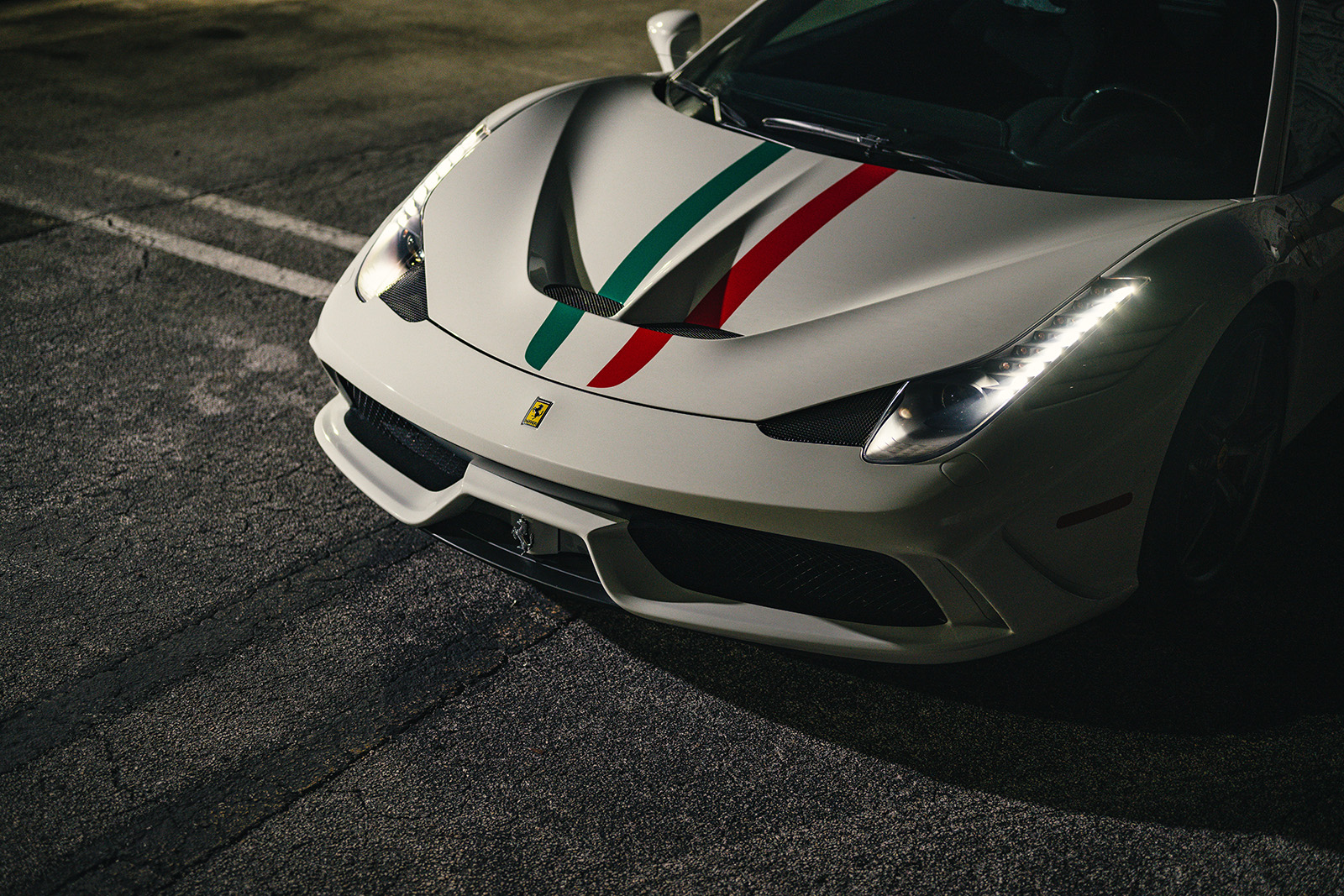
The Ferrari Speciale was known for having the final naturally aspirated V-8 engine without any sound filtering. However, it lacked another crucial sensory aspect: a manual transmission. Specifically, a metal-gated lever that produced distinct clickety-clack noises. This feature has been a significant part of many iconic Ferrari models, including the Pininfarina-designed 330 GTC and the F40.
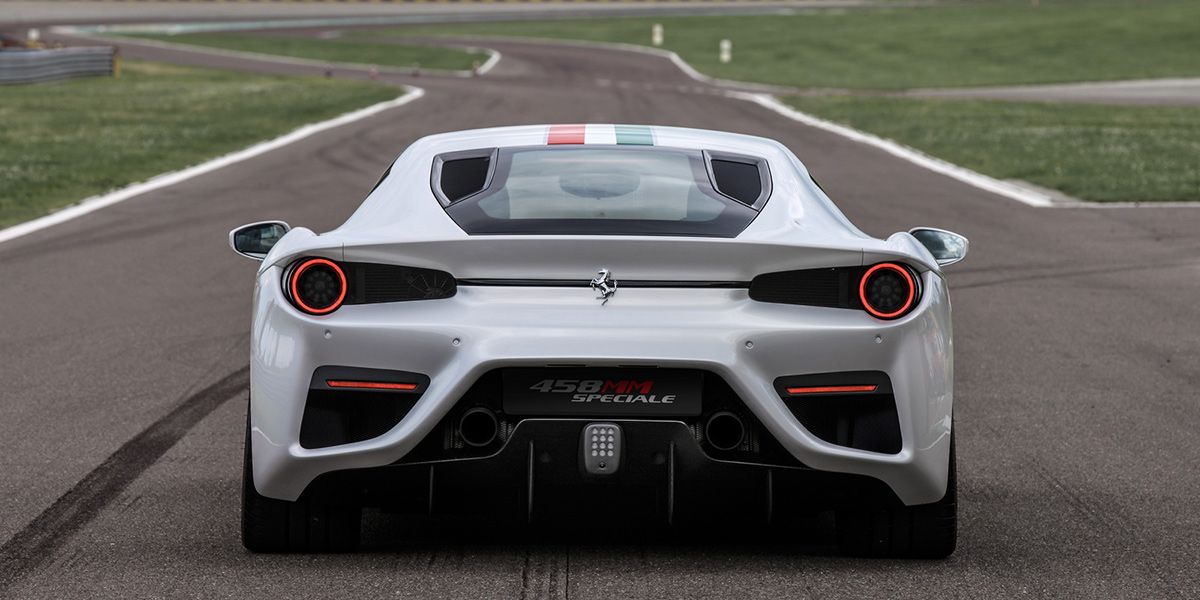
Ferrari had once offered manual cars to its customers, but over time, the company shifted to automated technology. However, in 2014, I had the opportunity to drive the last manual Ferrari ever imported to America – a 2009 599 GTB Fiorano V-12 that was previously owned by actor Nicolas Cage and is now in the possession of a passionate owner in Washington state. The Italian automaker first introduced its F1-derived electrohydraulic gear-and-clutch system in 1997 on the mid-engine 355. Despite this innovation, approximately 75 percent of Ferrari enthusiasts still preferred the conventional single clutch-plate manual. Unfortunately, the stick shift eventually became obsolete, with AI technology threatening to make humans irrelevant. Even with the development of dual-clutch gearbox in 2004, 20 percent of owners continued to hold onto their traditional manual cars. This was revealed to me by Ferrari’s then-technical director Roberto Fedeli during our conversation in 2014.
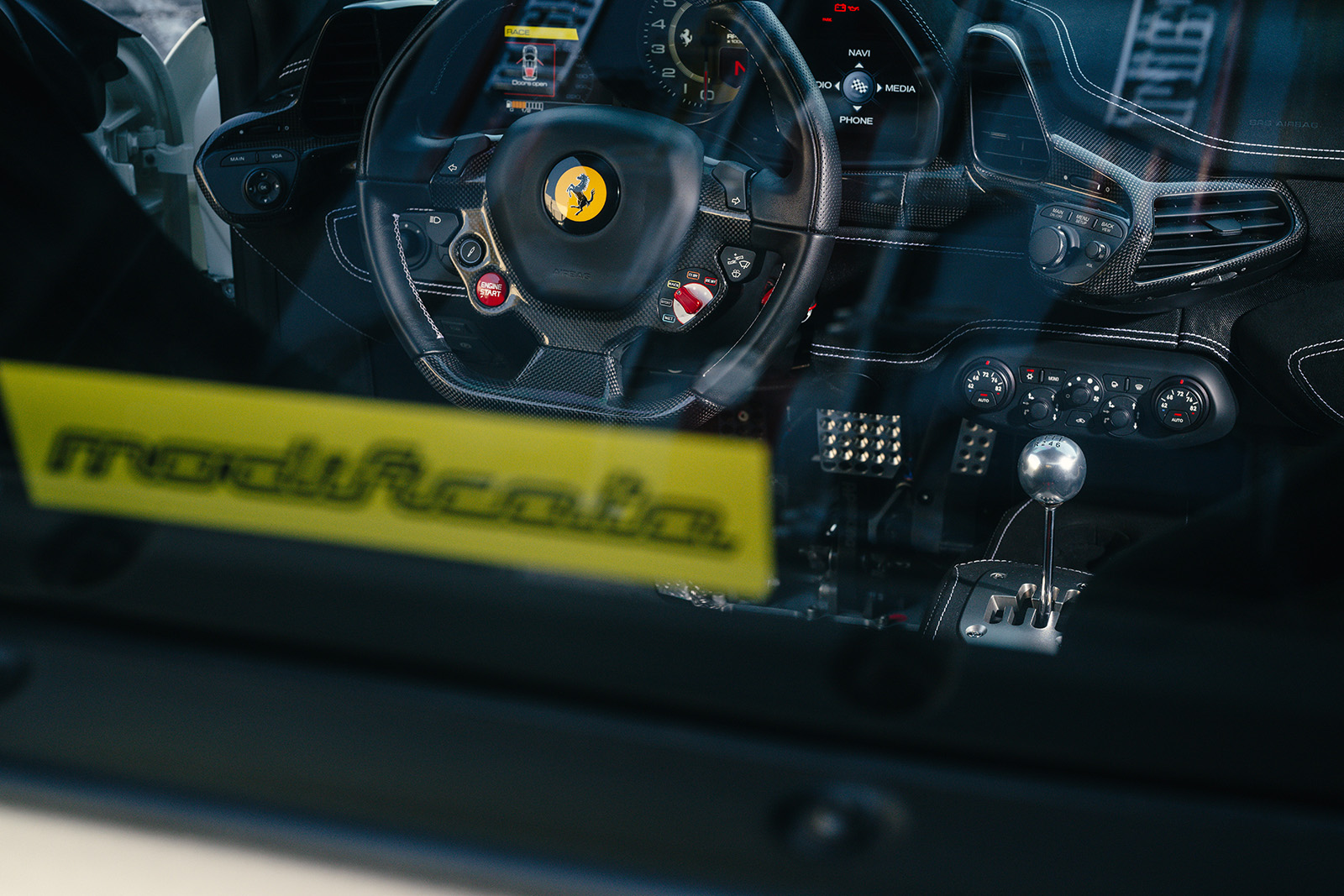
When Ferrari was creating the California convertible, they faced a tough decision between using a single-clutch automatic or a dual-clutch unit that would provide a smoother ride for high-horsepower engines. Unfortunately, the company had trouble making the latter option work. As a result, they built about 12 manual Californias in 2008 to ensure the car could be sold in different markets. These models were sent to dealers as demo units, but surprisingly, none of them sold except for one in California and another in Japan.
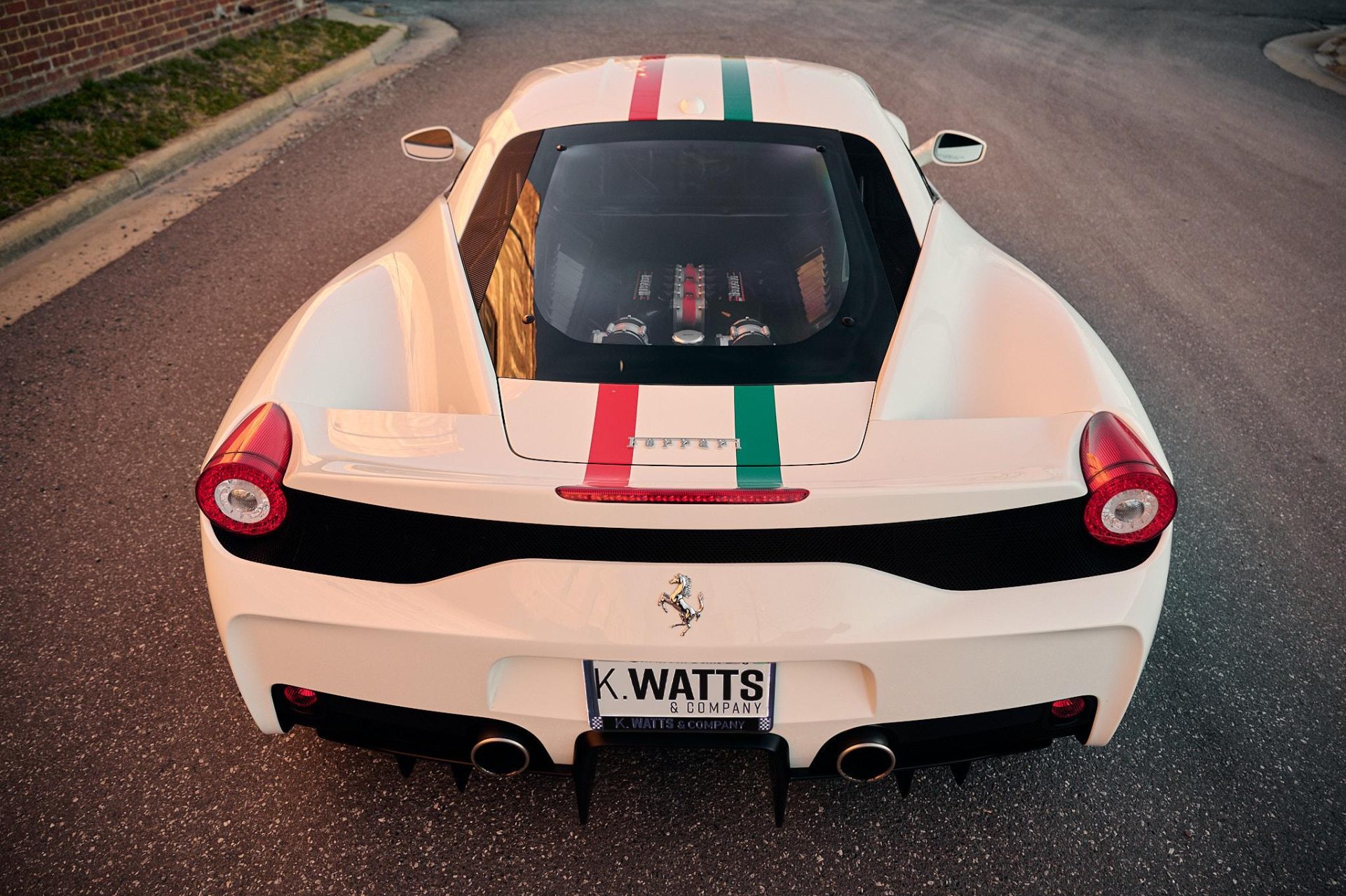
According to Fedeli, Ferrari believed that there was still a demand for manual transmission vehicles in the market. However, plans to offer this option on other models were quickly abandoned by the company. Both Ferrari and dealers discouraged the ownership of manual cars, favoring the promise of faster and more convenient vehicles. Some dealers even scared off potential buyers by claiming that their manual car would be difficult to sell. The last two manual Ferraris, both 599’s, were ordered by collectors from Hong Kong and produced in 2011.
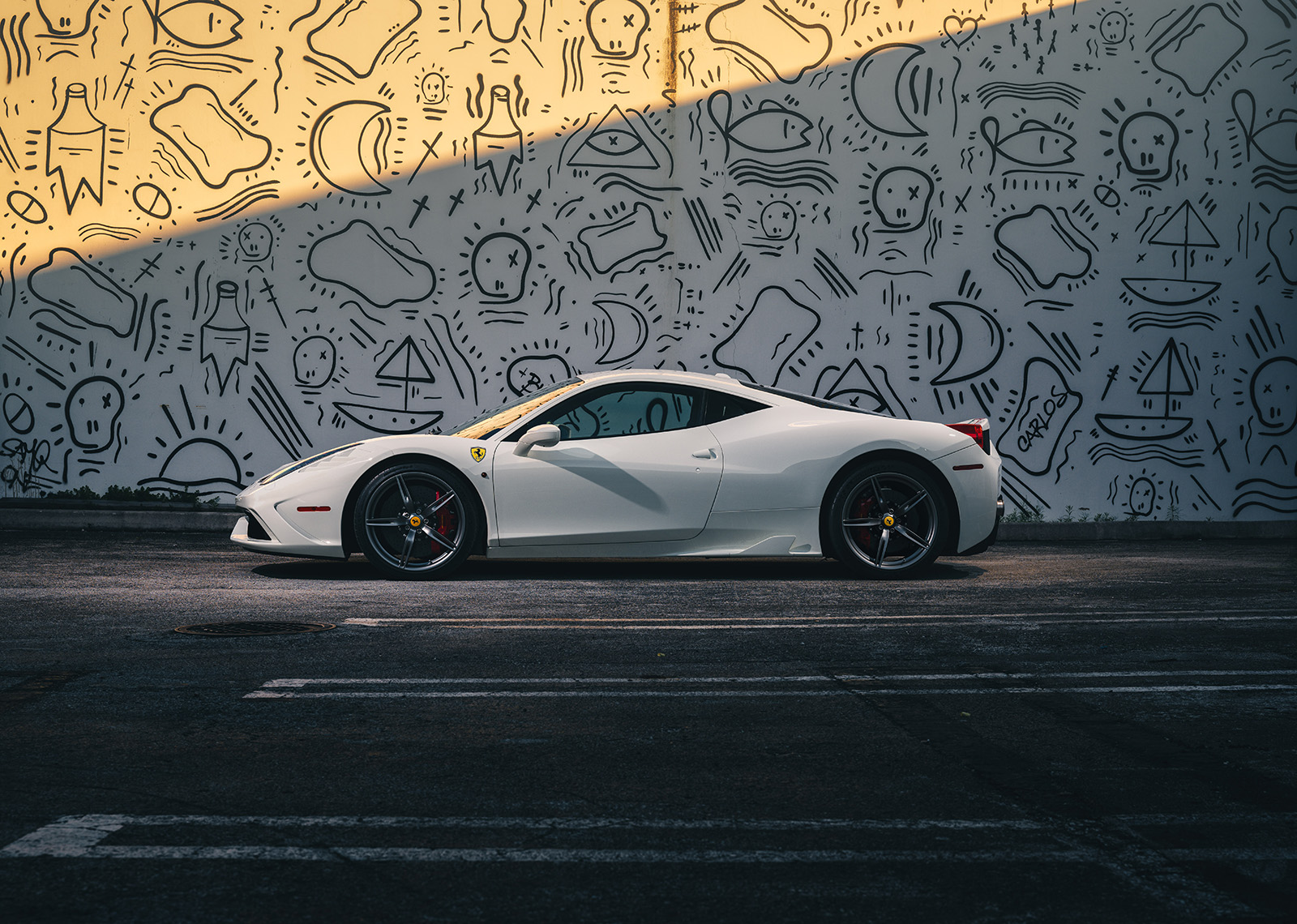
In Sharon’s coffee shop, Segal’s dream car – a white, frozen-yogurt colored 458 Speciale with an Italian-flag racing stripe – reminds me of the importance of proper heel-and-toeing. Although the car underwent a 3.5-year surgery to remove its rabbit-eared paddle shifters, it appears to have no memory of it. The automated gearbox is intricately connected to the car’s F1-derived systems, including the traction-apportioning Side Slip Control, making it challenging for Segal and his team to modify without affecting the car’s digital performance. Compared to his previous Modificata cars, such as the 355 and its ’90s technology, the interconnectivity of the 458 made tinkering difficult.

The Manettino lever in vibrant red still smoothly switches between driving modes, while the “bumpy road” pushbutton setting remains optimal for tire grip on any regular street, equipped with Michelin Pilot Sport Cup 2 tires. The Speciale was modified over three and a half years to enhance its performance, but it is important to note that it was not a mere “manual swap”, as Segal clarifies. Interestingly, the ECU was not cracked or reprogrammed during the process, which Segal explains is usually not effective for Ferrari vehicles.
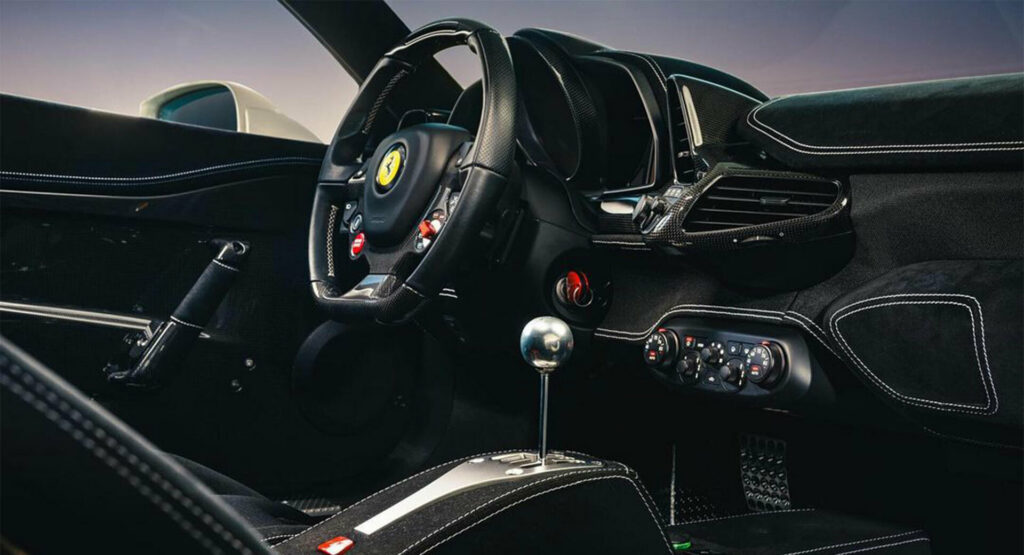
The challenge of modifying the car extended beyond the obvious changes and included tackling frustrating yet vital components such as reverse lights, shift indicators, and even an electronic parking brake that activates when the driver’s door is opened. However, according to Segal, the car remains oblivious to the alterations made, including the addition of a custom-made, Alcantara-covered center console that resembles a slim phantom limb. “The car must continue to function as it did before,” he explains. “It still expects signals from the dual-clutch and assumes it is in Neutral when it is in Neutral.”
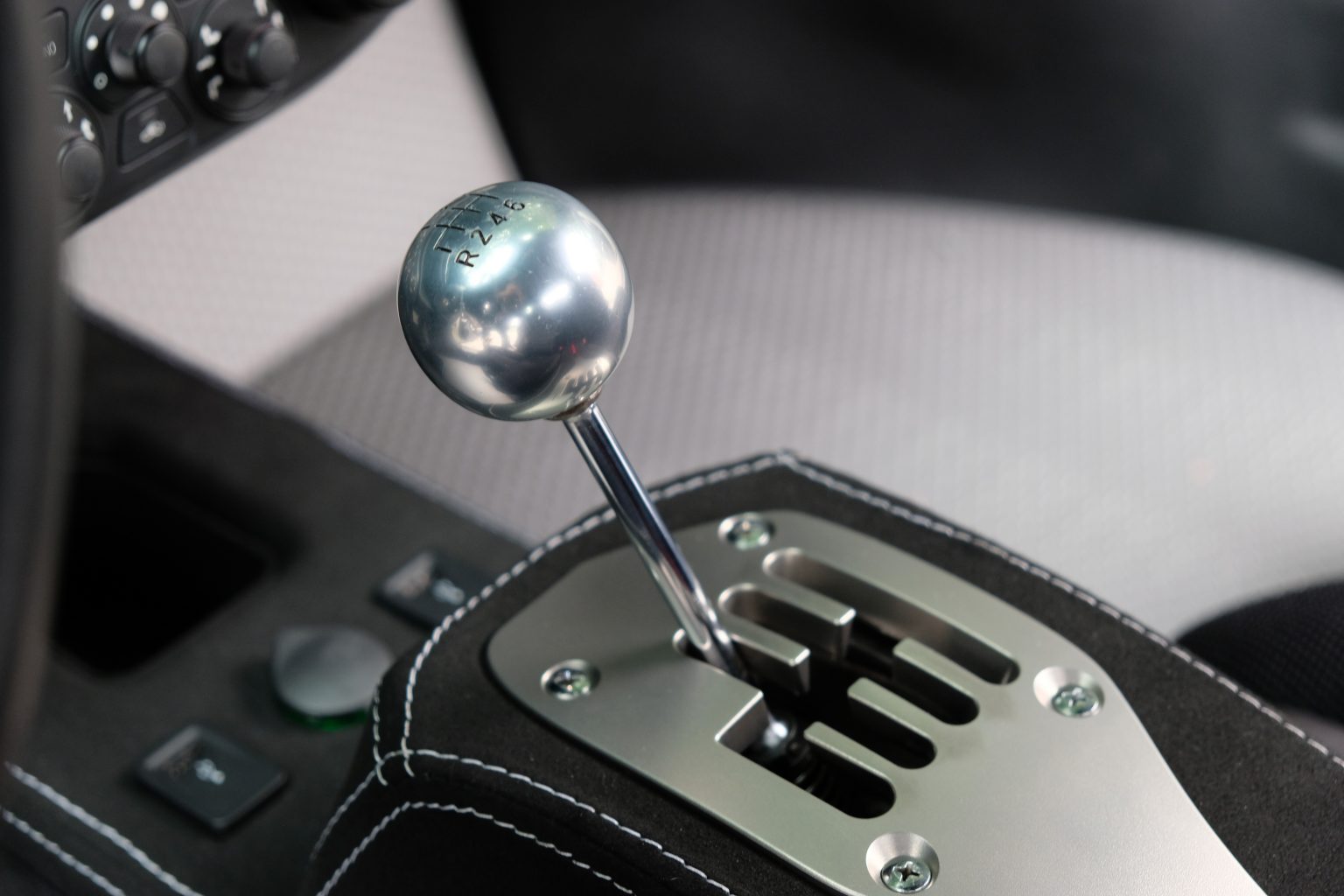
The lever at the top of the gearshift is waiting to be touched as I prepare myself for a ride through six forward speeds. The first gear is easy to slide into after pressing the “start” button. The 4.5-liter V-8 engine, showcased like a miniature model, produces a deep rumble, previewing the flat-cranking pleasure to come. A decade ago, its specific output was the highest amongst production V-8 engines, capable of generating 596 horsepower from a 4.5-liter displacement with a compression ratio of 14:1.
As I maneuver this exclusive V-8 engine, the stainless-steel baton lets out a piercing mechanical sound that culminates in a 9,000-rpm crescendo. The cabin transforms into a giant pit of mechanical noise, filled with the whooshing sound of the induction and the screeching sawtooth frequencies. The aroma of oil seeping from the depths of the transmission fills my nose. The cabin’s standard build contains no soundproofing or carpet, only thin composite floor sheets.
Segal, the creator, acknowledges that his creation cannot match the original’s lap or trap times with its seven tighter-spaced gears and 30-millisecond gear changes. However, the objective here is not just speed.
As he states, “You experience all the sensations and feelings, but there’s also a mental challenge.”
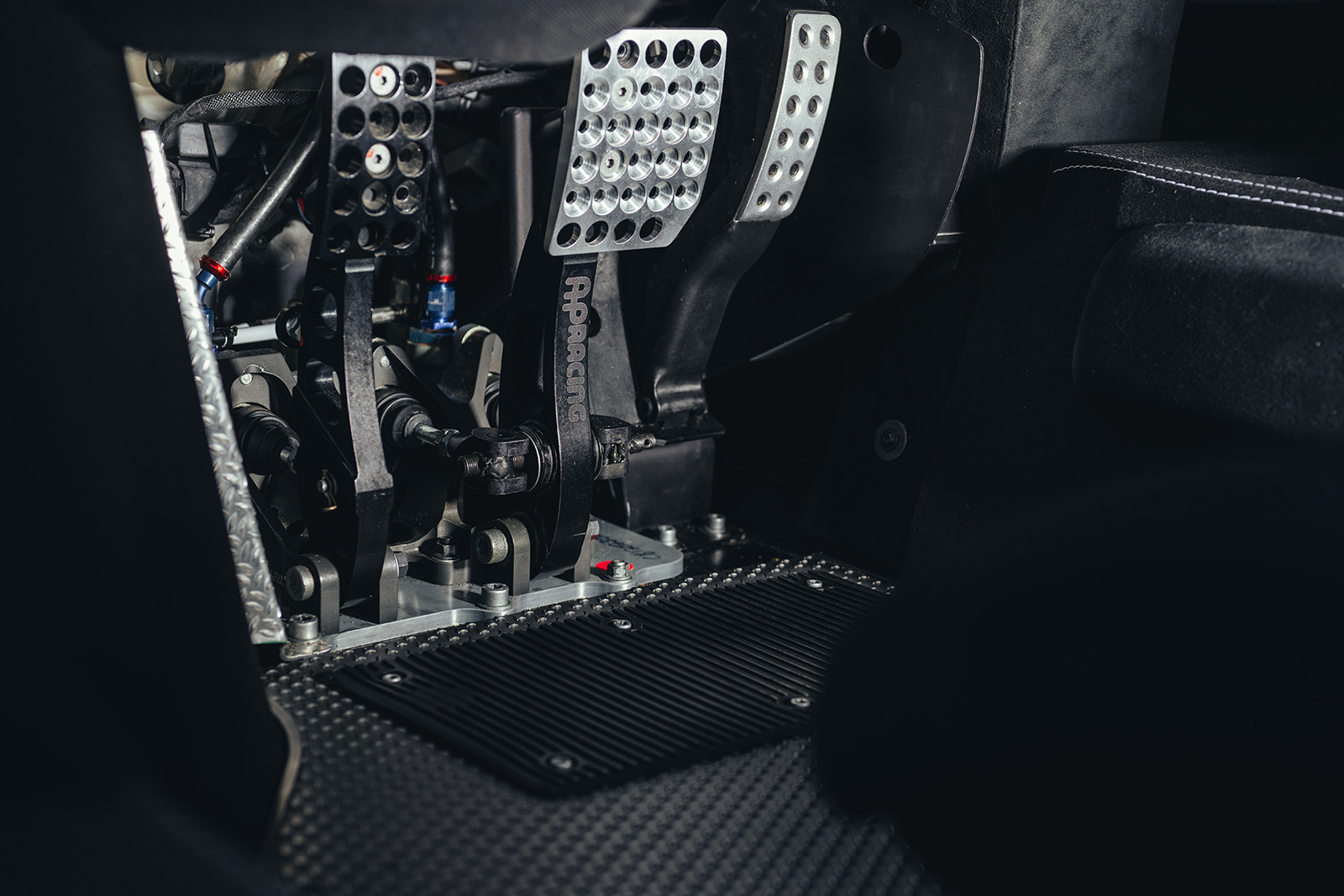
The vehicle is not only visually stunning, but it also presents a physical challenge, particularly for my out-of-practice feet, which make me feel like a novice learning the Tarantella. Since there is no space for three underslung pedals, Segal looked to his 458 GT3 racers and installed a lightweight AP Racing footbox with floor-mounted pedals instead. The stock carbon-ceramic brake system has been taken straight from the LaFerrari hypercar. Segal painstakingly fine-tuned the pedal and reworked the master cylinder to achieve a wide range of sensitivity. The pedal effort is high, but not so intense as to feel as though you are doing one-legged squats.
As a professional racer, Segal opted for a more track-specific setup, including a slightly dipping nose and wheel camber changes, which enabled the Speciale to be more alert and reactive to steering by getting more “up on its toes.” Whatever he did was successful since the Speciale is now as responsive as a guard dog in an Adderall factory while maintaining its purebred Italian howl.
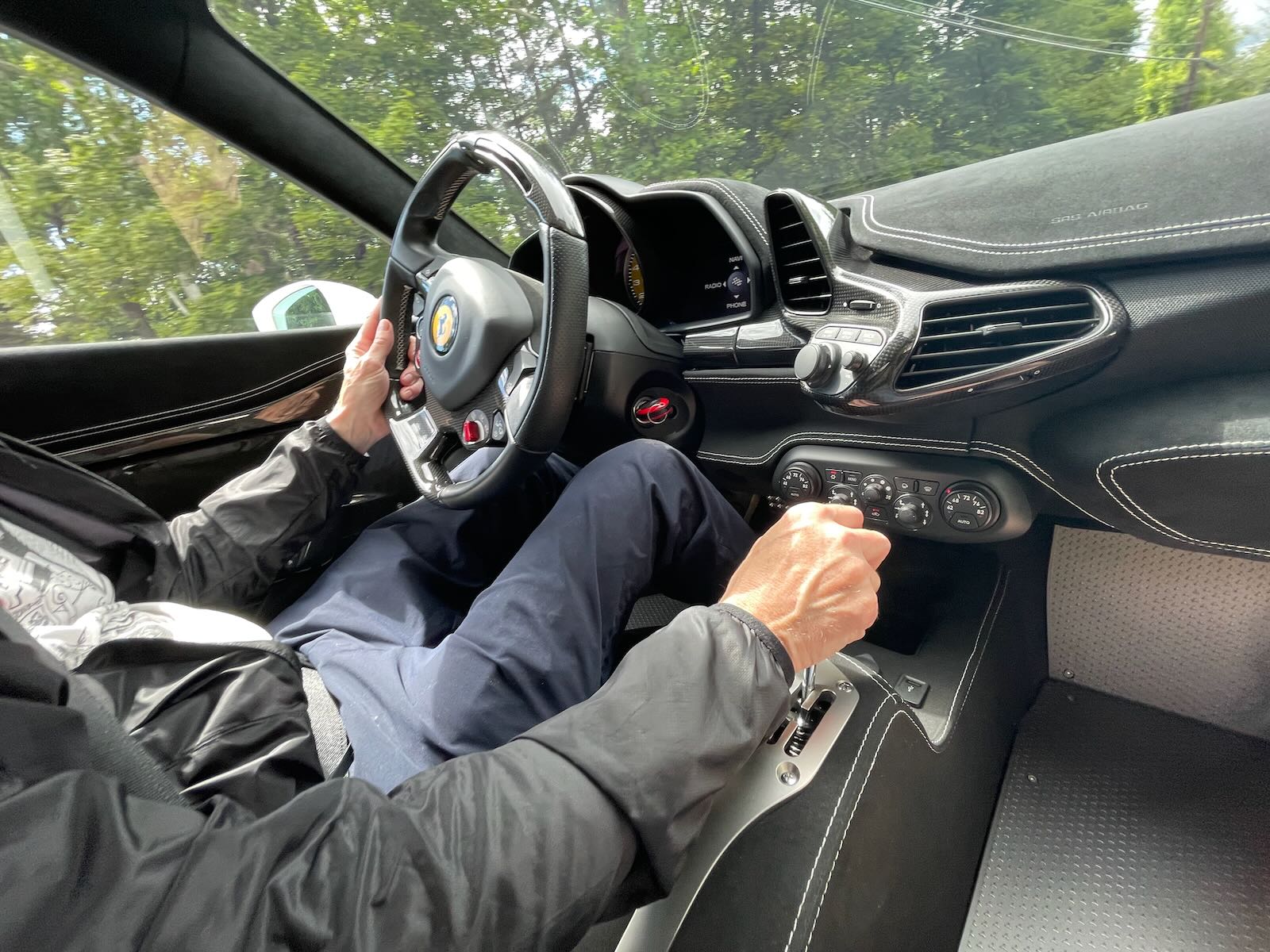
The writer describes their experience with a modified Ferrari that has a racing-style clutch. The clutch has a shorter stroke and an easy take-up point, making it easier to handle than a showroom car. The dual-clutch was removed, reducing the weight of the car by 130 pounds. The team working on the modification had to make endless calculations to figure out how to package the manual transmission to fit the unique mounting points of the Ferrari. While the writer is not privy to all the modifications, they mention that the lightweight flywheel and most transmission components are OEM Ferrari. The shifter gates are chamfered at a specific angle to allow for smooth shifting. Despite the modifications, driving the Ferrari requires skill as it arrives into corners quickly and some downshifts can be tricky. The writer receives coaching from the modification team leader, who describes the experience of driving the car as feeling like it’s the driver’s first time using a manual transmission.
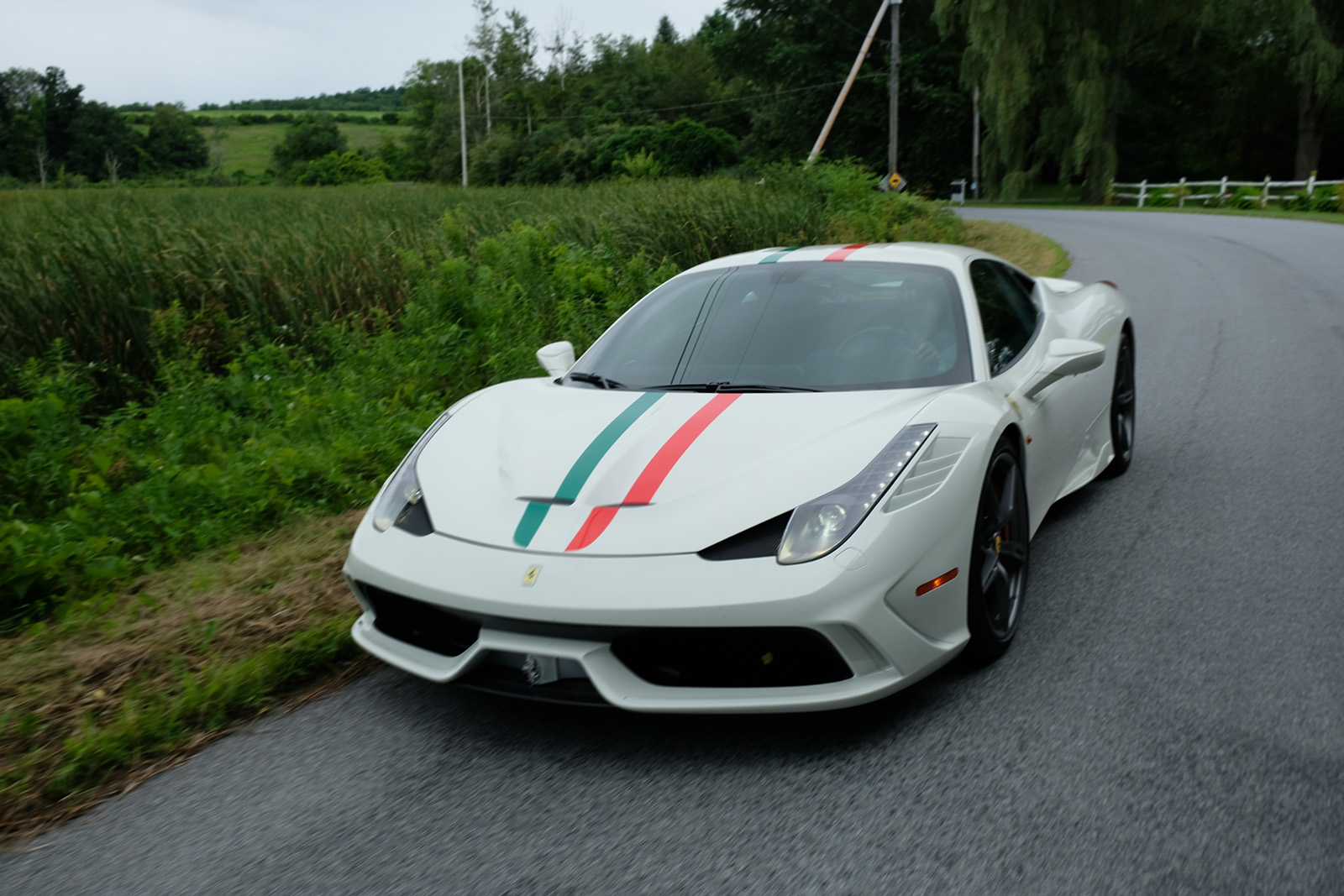
According to Segal, having a bad shift while driving his car can be frustrating, but it’s inevitable. He compares his modified car to the Porsche Carrera GT, which is known for its power-to-weight ratio and size. However, he clarifies that the Porsche’s reputation as a hazardous car was not due to its chassis dynamics, but rather its manual. The Porsche manual forced drivers to manage braking and shifting simultaneously, leading to fatal mistakes. Similarly, Segal’s car can be dangerous because things happen much faster, and mistakes can cause significant damage. Although his Speciale is capable of controlled slides, it still requires precision and skill to handle. Segal advises using a single robust throttle blip while maintaining brake pressure, which takes practice to master.
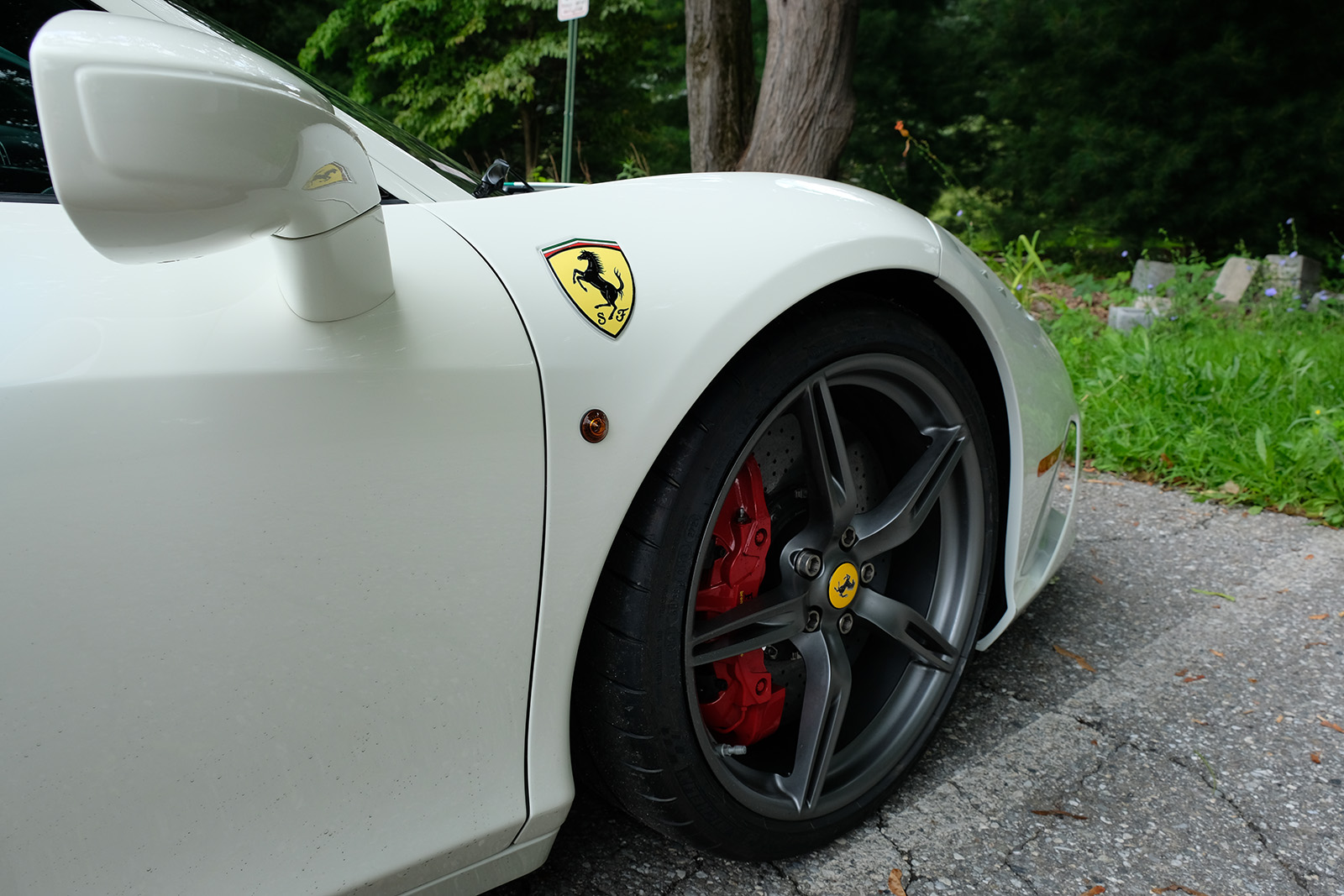
The sky turns dark as ominous clouds roll in, signaling an impending storm. As I reflect on my driving experience in the Ferrari 458 Speciale Modificata, I realize that I could have pushed the car harder, focusing on the thrill of the ride instead of just practicing heel-and-toe downshifts. Despite the car’s impressive capabilities, it still holds secrets that take time to uncover. This is precisely why the owner, Segal, built it – as a personal expression and professional calling card. It’s not for sale, but serves as a reminder that modern supercars and hypercars may offer incredible performance, but there’s a nostalgia for a more engaging and hands-on driving experience. The Ferrari 458 Speciale Modificata is just that – a thrilling and infinitely more interesting road car.




